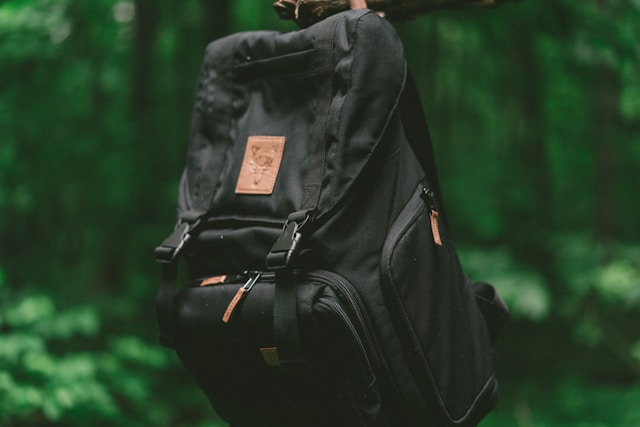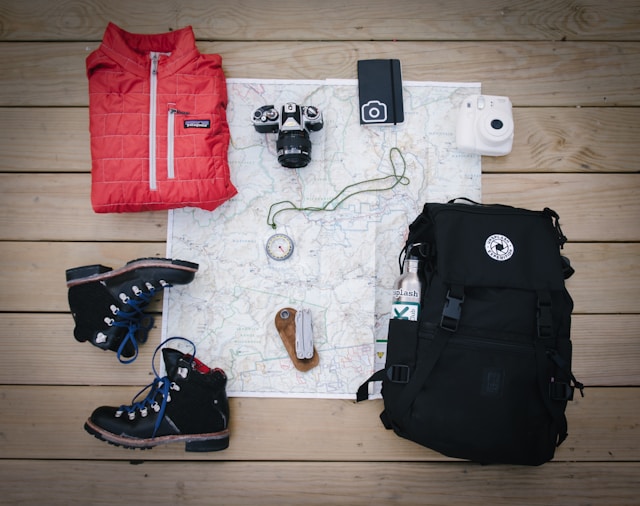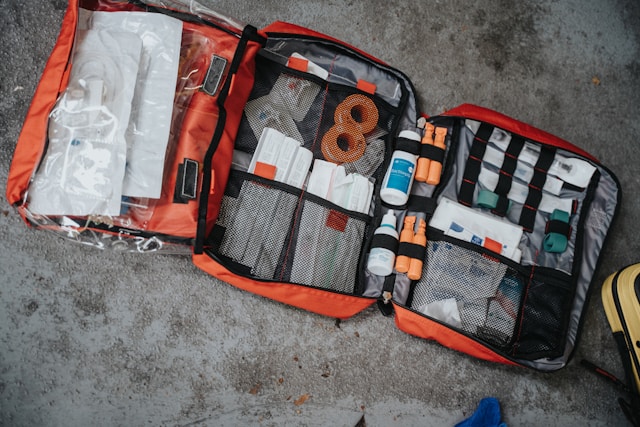Because it appears like a lot of effort for something that could never happen, the idea of a survival pack doesn’t appeal to everyone. It’s unusual to see an average individual out and about with a multi-tool, a first aid kit, and a flashlight.
But for those who are always on the go or whose work puts them in harm’s way, a survival pack is an essential part of daily life. It has nothing to do with believing that everyone is trying to get them or being paranoid. It’s like having a safety net in case you need to save yourself or someone else in a dire situation.
If you’re not a “doomsday prepper,” you probably don’t give much thought to assembling a survival pack. Having said that, being prepared for an emergency is crucial.
How Does a Survival Kit Work?
The following are a few things that you can consider packing in your survival tactical gear kit:
1. Folding Karambit
While the Karambit has been around for thousands of years and is regarded as one of the most dangerous portable weapons known to man, Fox Knives has employed cutting-edge technology to bring the karambit into the twenty-first century. Built for tough usage in the world’s harshest situations, this wicked little blade has been field-tested and approved by some elite users.
The Fox 599 Karambit, like other Fox knives, is long-lasting, dependable, and of superior quality. The 599 is a beast of a blade suitable for service members, law enforcement officers, citizens, first responders, and utility workers. It also has highly unusual features, such as the patented Emerson Wave.
2. Devices for Communication
Almost everyone owns a mobile phone. Carry a battery bank, a cable and converter, and a SIM card from the country you will be visiting.
Thinking about going remote? Things like the Zoleo or Bivy Stick, which allow for two-way satellite communication, come to mind. In the event of an emergency, you may quickly access the services you need, including your travel insurance provider, by pressing the dedicated SOS button.
3. Hose Adhesive
One of the most versatile survival tools is duct tape, which has several uses, such as stabilizing limbs, fixing tent leaks, sealing food bags, and making ropes or loops to attach gear to a backpack. If you want to keep it small, experts say to pack approximately 20 feet and wrap it around your water bottle.

4. Blanket for Emergencies
Wool is the go-to fabric for staying warm in rainy conditions. Lightweight space blankets The lightweight and reflective Mylar material could be more convenient to bring along. Will it retain body heat? That is the most important issue, regardless of what you carry.
5. Emergency Supplies
The most basic components of a first aid kit should contain a Sam splint, Ace bandages, and a variety of sized gauze pads. When it comes to stopping the flow of blood, Merola and Weinstein both suggest using a tourniquet, a compression device that might potentially save lives.
6. Ignitor for Fires
You should be able to build a fire with relative ease to keep warm and prepare food.
A fire can be started in several ways. A long-lasting reusable fire starter, a lighter, tinder, a magnifying glass, flint and steel, a magnesium bar, or weatherproof matches. The latter should only be brought along if the former is understood and used regularly at home. Before venturing into the wilderness, know how to use your gear.
7. Cleansing Products
Put some biodegradable face and body wipes away if you’re short on storage space. Having this will assist you in maintaining your sanity when rescue is just a day or two away. Next on the list: a little tube of toothpaste and a toothbrush.
8. Energy-Dense Foods:
Be careful not to include random foods in your survival kit. Merola advised keeping calorie-heavy snacks on hand. Protein, fat, and carbohydrates should all be included.
Energy bars are an excellent option.
Try something with a lot of protein, like a 12-gram RX Bar. Try LARABARs that include dates, fruit, and nuts; they include actual ingredients. Select an organic bar (one with stricter regulations) over a natural bar (one with looser regulations).
The shelf life of bouillon cubes is two years, whether they contain vegetable or meat stock. Aside from keeping you hydrated and providing some nutrients, the comforting warmth of soup may do wonders for your spirits.
Additional suggestions: jerky, trail mix, freeze-dried foods, and dry items such as rice or beans.

9. Light
When it becomes dark outside, a flashlight is the best tool to have on hand. If carrying along additional batteries isn’t an option, think about getting a hand-crank model. One step better: a light that frees up your hands. Any dollar store should have chemical light sticks; they’re compact and convenient to bring along.
10. Getting Around
We reiterate what was in our Ultimate Travel Safety Kit: It doesn’t matter how familiar you are with the place or its geography; errors are still possible. Always have a compass, map, and GPS device on hand, preferably one with cellular or satellite connectivity.
11. Nonprescription Drugs
Daily, which over-the-counter drugs do you typically take? Include a little bottle of over-the-counter pain medication, an antacid, and a decongestant with your first aid equipment.
12. Cutting tools
Do you also have a multi-tool that you can use at mealtimes? A knife, fork, spoon, and the ability to open cans or bottles are essential for kitchen and eating utensils. Some even have their carrying case, and many fold up and unfold.
The American Red Cross suggests drinking one gallon of water daily for each individual. Having water treatment supplies on hand is essential since no one could bring that much.
13. Treatment Equipment for Water
Be careful to filter and cleanse the water before drinking it, rather than just drinking it from any local source. There are a few different ways to purify water: using chemicals like iodine or chlorine, boiling the water, or even ultraviolet light.
14. Secure Enclosures
Put everything you don’t want to get wet inside a zip bag. Check if the brand has stronger plastic and a durable zipper. Store toilet paper, protect devices, arrange food, maintain fire starters dry and tidy, take away garbage, and collect rainwater—those are just a few of the many applications listed by GearJunkie for this multipurpose survival kit item.

In the end!
It is easy to accommodate all gear if you prepare beforehand and think things through well. When things go bad, you’ll be able to survive—and maybe even thrive—with the supplies you have in your survival pack.







